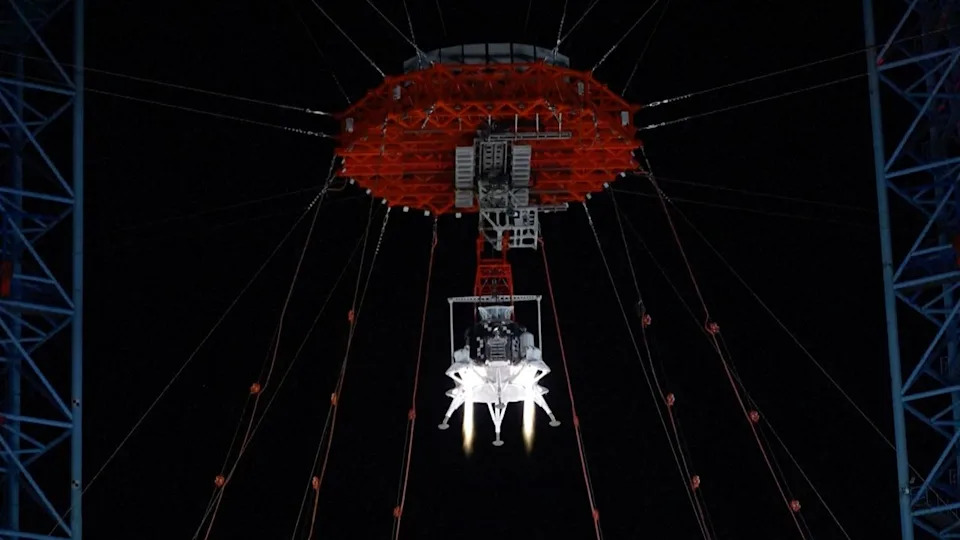China Advances Crewed Moon Landing Aspirations With Lander Test

Recent trials have validated a key component of China’s ambitious lunar exploration program: its novel crewed lunar lander, Lanyue – meaning “Embracing the Moon.” The test involved a simulated landing and subsequent liftoff from a surface meticulously replicated to mirror the moon’s terrain.
Lanyue represents China’s initial vehicle specifically engineered for transporting astronauts between lunar orbit and the stark landscape of the moon. Supported by four legs, this lander is intended to convey two taikonauts (Chinese astronauts) alongside scientific instruments, vital life-support infrastructure, and provisions to facilitate extended missions on the lunar surface.
The China Aerospace Science and Technology Corporation (CASC) orchestrated the exercise in Huailai County, Hebei Province, employing a meticulously constructed environment featuring simulated craters, rocks, and a specially prepared coating to emulate lunar soil composition. The evaluation rigorously assessed Lanyue’s landing and ascent propulsion systems, verifying their operational integrity alongside crucial guidance and control mechanisms, mechanical compatibility, and the vehicle’s resilience under conditions mimicking launch-related stress.
This successful assessment signifies considerable progress towards China’s long-term objectives, notably a crewed lunar mission slated for 2030 and a collaborative International Lunar Research Station planned for 2035, undertaken in partnership with Russia and other international entities.









